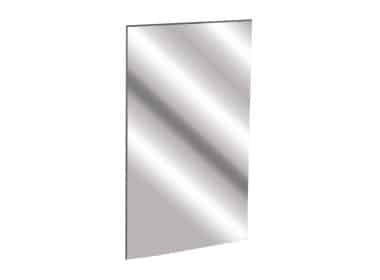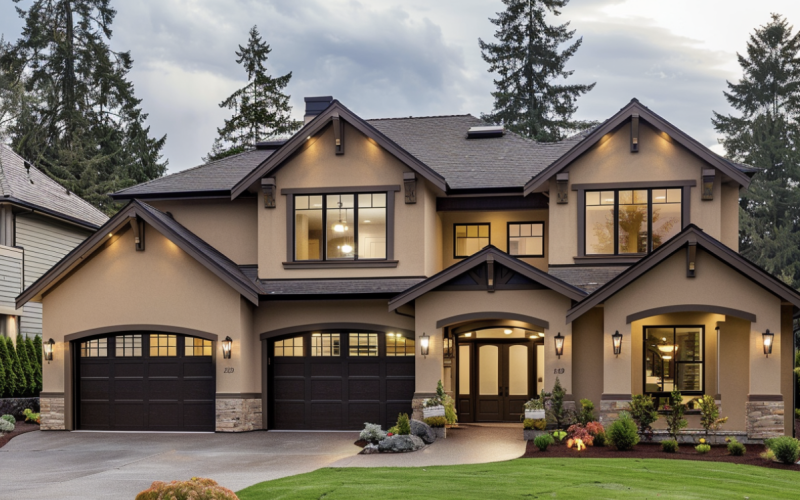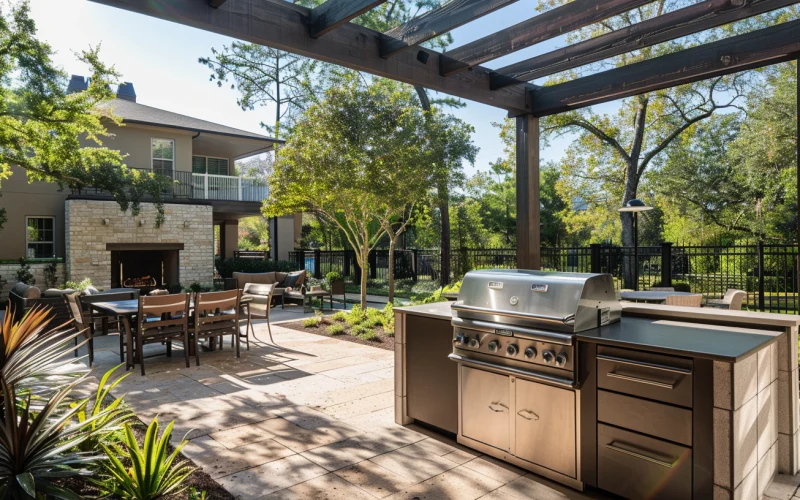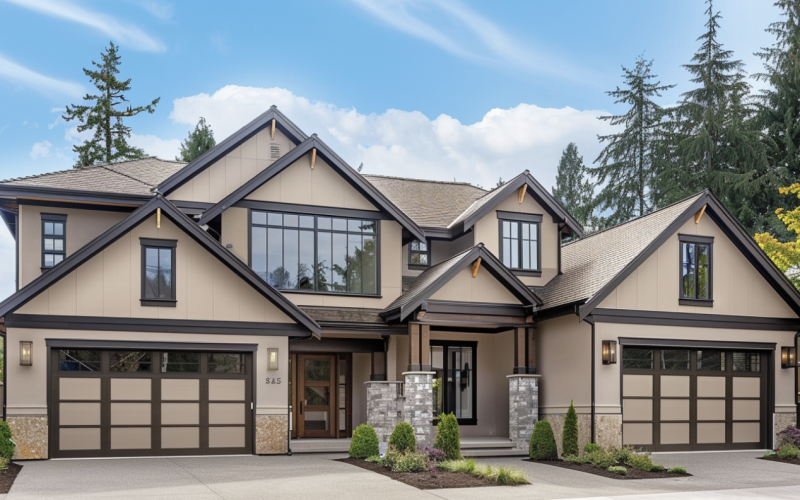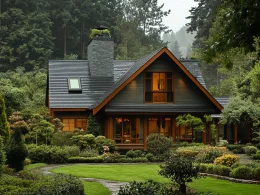When it comes to maintaining your home, painting the exterior is an important task that shouldn’t be overlooked.
A fresh coat of paint improves the look of your house and protects it from weather damage. Knowing when to repaint can be crucial for homeowners with tan houses and similar colors.
Typically, a tan house should be repainted every 5-10 years, depending on the house’s material, climate, and the quality of the previous paint job.
This guide will help you understand the key factors influencing how often you should repaint your tan house and how to keep it looking its best.
Why Repaint Your Tan House?
Repainting your house is more than just a cosmetic update. It serves several crucial purposes:
- Protect Your Investment: Paint acts as a barrier against harsh weather conditions. It protects your house from rain, sun, wind, and other elements that can cause damage over time.
- Enhance Curb Appeal: A well-painted house looks attractive and well-maintained. This is especially important if you are considering selling your home, as it can increase its market value.
- Prevent Damage: Regular repainting helps prevent mold, mildew, and wood rot. It ensures that your house remains structurally sound and safe to live in.
Repainting at the right time can save you money in the long run by avoiding more significant repairs.
Factors Influencing Repainting Frequency
Understanding how often to repaint your tan house depends on several factors:
House Material
- Wood Siding: Wood requires more frequent maintenance. Repaint every 3-7 years.
- Stucco: Stucco surfaces should be repainted every 5-6 years.
- Brick: Such homes need less frequent repainting every 10-15 years.
- Vinyl and Aluminum Siding: These durable materials require repainting every 5-10 years.
Climate and Weather Conditions
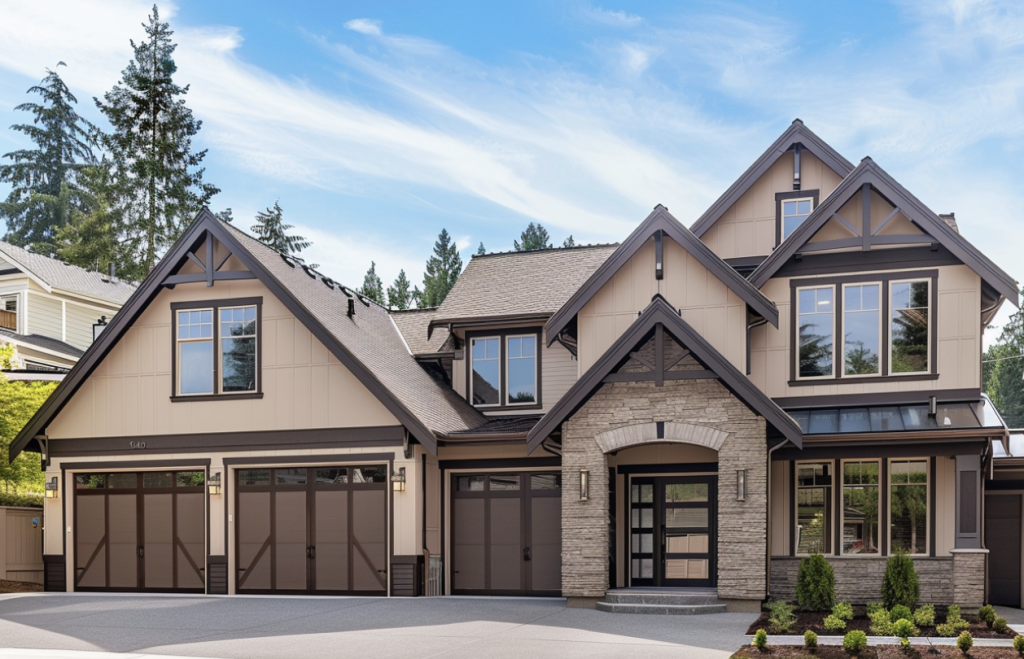
- UV Exposure: High exposure to sunlight can cause paint to fade faster, necessitating more frequent repainting.
- Temperature Fluctuations: Extreme temperature changes can cause paint to crack and peel.
- Humidity and Rain: Humid and rainy climates can lead to mold and mildew, which degrade paint quickly.
Quality of Previous Paint Job
- Using high-quality paint and proper application techniques can extend the life of your paint job.
- Professional painting services often provide better results, ensuring your paint lasts longer.
By considering these factors, you can better plan for when your tan house will need a fresh coat of paint.
Signs That It’s Time to Repaint
Knowing when to repaint your house can prevent damage and keep it looking fresh. Here are some signs that it’s time to repaint:
- Peeling or Cracking Paint: It no longer adheres to the surface if you notice paint peeling or cracking. This can expose your house to potential water damage.
- Fading Paint: Sun exposure can cause paint to fade. If the color looks dull and worn out, it’s time for a new coat.
- Cracking Caulk: Caulk seals gaps around windows and doors. When it starts to crack, it indicates that your house needs maintenance, including repainting.
- Wood Panel Gaps: Gaps between wood panels suggest that the wood is aging and may need replacing, followed by repainting.
These signs are crucial to maintaining your house’s exterior and preventing more significant issues. If you observe any of these, consider scheduling a repainting job soon.
Choosing the Right Paint
Selecting the right paint for your tan house ensures durability and a long-lasting finish. Here are some key considerations:
High-Quality Paint
Investing in high-quality paint can significantly extend the life of your paint job. Quality paints offer better coverage, resist fading, and withstand harsh weather conditions.
Type of Paint
- Acrylic Paint: Known for its flexibility and durability, it is a great choice for exterior surfaces. It can expand and contract with temperature changes, preventing cracking and peeling.
- Latex Paint: Latex paint is another good option. It is easy to clean, environmentally friendly and provides a durable finish. It suits various surfaces, including wood, stucco, and brick.
- Oil-Based Paint: While less popular due to its strong fumes, oil-based paint offers excellent durability and is ideal for high-traffic areas like doors and trim.
Paint Finish
- Flat or Matte Finish: This finish hides imperfections but is less durable, making it suitable for low-traffic areas.
- Satin Finish: Provides a slight sheen and is more durable than matte. It is a good choice for siding.
- Glossy and Semi-Gloss Finishes: These are durable and water-resistant, making them ideal for doors, trim, and areas exposed to the elements.
Choosing the right paint type and finish ensures your tan house remains protected and looks beautiful for years.
Preparing for Repainting
Proper preparation is essential to achieve a long-lasting paint job. Here are the steps to ensure your house is ready for repainting:
Surface Preparation
- Clean the Surface: Remove dirt, mildew, and loose paint using a pressure washer or scrub brush. A clean surface helps the paint adhere better.
- Repair Damages: Fix any cracks, holes, or damaged siding. Replace rotten wood and repair stucco or brick as needed.
- Sanding: Sand rough spots and peeling paint to create a smooth surface. This step is crucial for ensuring a uniform finish.
Priming
- Apply Primer: Use a high-quality primer to seal the surface and provide a base for the paint. Priming is especially important for bare wood, stained areas, or surfaces with significant repairs.
Choosing the Right Time
- Weather Conditions: Plan to paint during mild weather conditions. Avoid painting in extreme temperatures or during wet and humid weather, as this can affect the paint’s adhesion and drying time.
Gathering Materials
- Quality Brushes and Rollers: Invest in good brushes and rollers to ensure a smooth application.
- Drop Cloths and Tape: Protect areas you don’t want to paint, such as windows and walkways, with drop cloths and painter’s tape.
Conclusion
Regularly repainting your tan house is essential for maintaining its appearance and protecting it from the elements.
Repainting every 5-10 years can prevent damage, enhance curb appeal, and ensure your home remains a valuable investment.
To determine the best time to repaint, consider the material of your house, climate conditions, and the quality of your previous paint job.
Look for signs like peeling or cracking paint, fading color, and cracking caulk, indicating it’s time for a fresh coat.
Choose high-quality paint and ensure proper preparation for a durable and beautiful finish. If needed, consult with professional painters to get the best results.
By following these guidelines, your tan house will look great and be protected for years.




